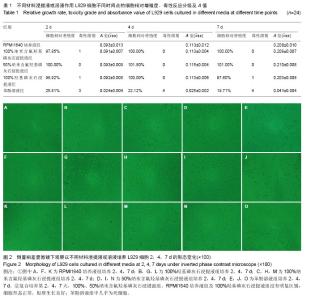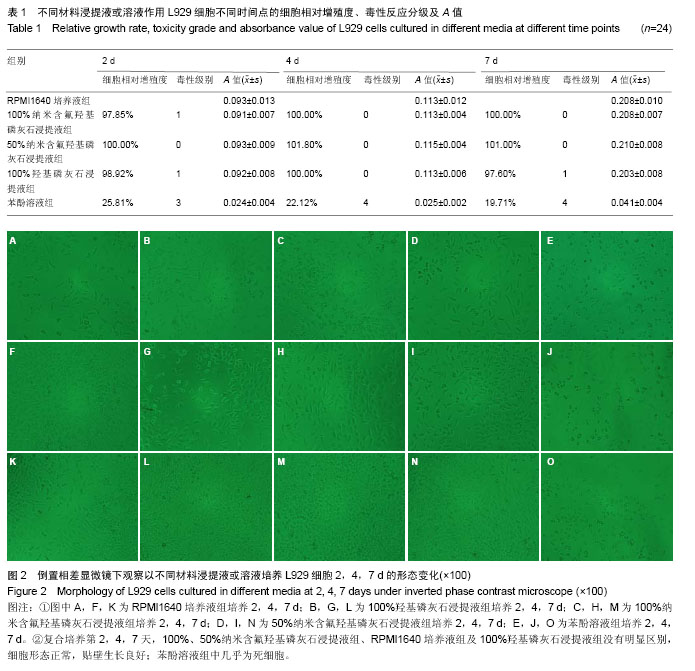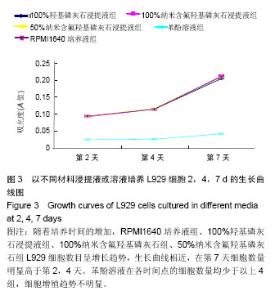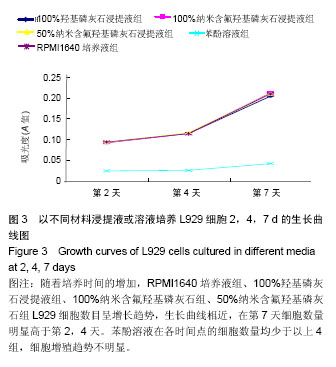| [1] 徐启文,黄岳山,吴效明.羟基磷灰石生物陶瓷及涂层制备技术的研究进展[J].北京生物医学工程,2003,22(3):228-231.
[2] Wang J,Chao YL,Wan QB,et al.Fluoridated hydroxyapatite coatings on titanium obtained by electrochemical deposition.Acta Biomaterialia.2009;5(5):1798-1807.
[3] Barinov SM,Shvorneva LI,Ferro D,et al.Solid solution formation at the sintering of hydroxyapatite-fluorapatite ceramics. Sci Technol Adv Mater.2004;5(5-6): 537-541.
[4] Liu DM,Troczynski T,Tseng WJ.Water-based sol-gel synthesis of hydroxyapatite: process development. Biomaterials. 2001; 22(13):1721-1730.
[5] Montazeri L,Javadpour J,Shokrgozar MA,et al.Hydrothermal synthesis and characterization of hydroxyapatite and fluorhydroxyapatite nano-size powders. Biomed Mater.2010; 5(4):045004.
[6] Zhang S,Zeng XT,Wang YS,et al.Adhesion strength of sol-gel derived fluridated hydroxyapatite coatings. Surf Coat Technol. 2006;200(22-23):6350-6354.
[7] Zhang S,Wang YS,Zeng XT,et al.Evaluation of adhesion strength and toughness of fluoridated hydroxyapatite coatings.Thin Solid Films.2008;516(16):5162-5167.
[8] Cai YL,Zhang JJ,Zhang S,et al.Osteoblastic cell response on fluoridated hydroxyapatite coatings: the effect of magnesium incorporation.Biomed Mater.2010;5(5):054114.
[9] Ge X,Leng Y,Ren F,et al.Integrity and zeta potential of fluoridated hydroxyapatite nanothick coatings for biomedical applications.J Mech Behav Biomed Master. 2011;4(7): 1046-1056.
[10] Kimoto K,Okudera T,Okudera H,et al.The bioactivated interfacial behavior of the fluoridated hydroxyapatite, physical properties.J Oral Implantol.2011;37(1):27-33.
[11] Li J,Cao L,Song Y,et al.The bioactivated interfacial behavior of the fluoridated hydroxyapative-coated Mg-Zn alloy in cell culture environments.Bioinory Chem Appl.2011;2011: 192671.
[12] Hahn BD,Cho YL,Park DS,et al.Effect of fluorine addition on the biological performance of hydroxyapatite coatings on Ti by aerosol deposition.J Biomater Appl.2013;27(5): 587-594.
[13] Ge X,Leng Y,Bao C.Antibacterial coatings of fluoridated hydroxyapatite for percutaneous implants.J Biomed Mater Res A.2010;95(2):588-599.
[14] 艾桃桃.含氟羟基磷灰石的性能及涂层制备技术[J].现代技术陶瓷,2009,17(2):7-11.
[15] 胡淑慧,黄安国,刘源.生物涂层制备技术的研究现状及进展[J].电焊机,2012,42(5):62-66.
[16] Asefnejad A,Behnamghader A,Khorasani MT,et al. Polyurethane/ fluor-hydroxyapatite nanocomposite scaffolds for bone tissue engineering. Part I: morphological, physical, and mechanical characterization.Int J Nanomedicine.2011;6:93-100.
[17] Darimont GL,Cloots R,Heinen E,et al.In vivo behaviour of hydroxyapatite coatings on titanium implants: a quantitative study in the rabbit.Biomaterials. 2002;23(12):2569-2575.
[18] Ohno M,Kinoto K,Toyoda T,et al.Fluoride-treated bio-resorbable Synthetic hydroxyapatite promotes proliferation and differentiation of human osteoblastic MG-63 cells.J Oral Implantol.2011;39(2):154-160.
[19] Li J,Song Y,Zheng S,et al.In vitro responses of human bone marrow stromal cells to a fluoridated hydroxyapatite coated biodegradable Mg-Zn alloy.Biomaterials. 2010;31(22):5782-5788.
[20] Joughehdoust S,Behnamghader A,Jahandideh R,et al.Effect of aging temperature on formation of sol-gel derived fluor-hydroxyapatite nanoparticles.J Nanosci Nanotechnol. 2010;10(4):2892-2896.
[21] 游滢滢,黄生高.牙种植体纳米含氟羟基磷灰石涂层材料制备实验研究[J].中国实用口腔科杂志,2013,6(2):102-104.
[22] 中华人民共和国国家质量监督检验检疫总局.GB/T 16886.1-2003.中华人民共和国医疗器械生物学评价 第4部分:与血液相互作用试验选择[M].北京:中国标准出版社,2003.
[23] 中华人民共和国国家质量监督检验检疫总局.GB/T 16886.5-2003.中华人民共和国医疗器械生物学评价 第5部分:体外细胞毒性试验[M].北京:中国标准出版社,2003.
[24] 郝和平.医疗器械生物学评价标准实施指南[M].北京:中国标准出版社,2000:1-19 .
[25] Piattelli A,Cosci F,Scarano A,et al.Localized chronic suppurative bone infection as a sequel of peri-implantitis in a hydroxyapatite- coated dental implant. Biomaterials.1995;16(12):917-920.
[26] Wang YS,Zhang S,Zeng XT,et al.In vitro behavior of fluoridated hydroxyapatite coatings in organic-containing simulated body fluid.Mat Sci Eng C.2007;27(2):244-250.
[27] Pioletti DP,Takei H,Lin T,et al.The effects of calcium phosphate cement particles on osteoblast functions. Biomaterials. 2000;21(11):1103-1114. |



